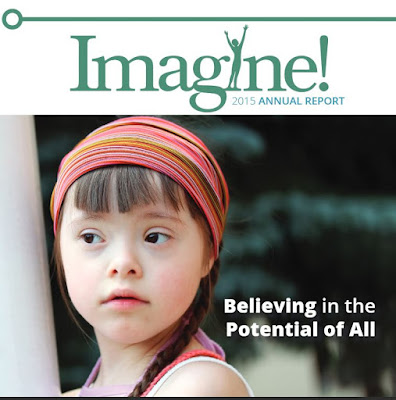What will I/DD services look like in five years?
- Delivery model: I see services for individuals with I/DD being swept up into other federally funded Medicaid Long Term Care Services. Right now, Colorado is moving forward with an Accountable Care Collaborative (ACC) model to expand medical home services for their adult and pediatric Medicaid population. This concerns me for several reasons, but primarily because services for people with I/DD aren’t always, or even usually, medical services, and shouldn’t be treated as such. Allow me to explain. Under the ACC model, primary care medical providers (PCMPs) contract with regional care collaborative organizations (RCCOs) to provide medical home services to Medicaid enrollees. The goal of the ACC is to have every member linked with a primary care medical provider (PCMP) as his or her central point of care, and the PCMPs are directly responsible for ensuring timely access to primary care for ACC members. Our non-medical services are designed to provide opportunities for people with I/DD to engage fully in their communities, and therefore they occupy a unique niche in Medicaid’s funding system that doesn't fit well with the ACC model. Recent history demonstrates that when I/DD services are blended with other services in order to make appropriations easier for the State, it’s the I/DD services that suffer, followed by inevitable unintended consequences.
- Reimbursement model: Reading between the lines of the ACC Phase II documents, the funding mechanism for most I/DD services will probably remain a fee for service model. There seems to be little acknowledgement or memory of what a disaster this model has been. Preferably the state would consider moving the resources directly to the end-user team, and let them figure out the plan. This would be a true person-centered approach.
- Regulatory/legislative issues: It gives me no pleasure to say that Colorado does not appear to have the horsepower when considering unintended consequences or redundancies when creating new rules and regulations, and will struggle to keep up as the world moves at lightning speed around it. I see little evidence that this will change in the near future.
- Labor force shortage: Along with many others, I have been warning about the impending workforce shortage facing our field (check out this post from 2010). Well, now it is here. There are too few people able and willing to do the hard work of Direct Support Professionals for such poor pay. This is why Imagine! has been pushing for technology solutions so diligently over the past decade. We need to engage new business tools now.
- Regulators removed bundling in the mid-2000s. Providers are sneaking back to bundling even within the fee-for-service model. They are struggling with capacity issues and low rates and bundling services together will temporarily mitigate some of the fee-for-service issues. We’ll see if this can continue.
- If I/DD services are crammed into the ACC, Community Centered Boards will be reinvented and redefined due to the impact of the ACC. I used to think that the concerns about Conflict Free Case Management (learn more about CFCM via video here, here, here, here, here, here, here, here, here, and here) would cause more fear in Colorado’s system, but now I think the ACC will be the ”man behind the curtain.” It is difficult to guess what the final result will look like, as the State has been completely opaque when it comes to offering information. As for providers, even though we have seen recent growth in the number of small providers, I predict we will be seeing a great deal of consolidations, mergers, or arrangements similar to franchising, moving forward. Current rates just won’t allow for smaller providers to thrive.
- If you have read this blog at all, I think you know where I stand on this particular topic. I believe in a technology first approach. All of us use what I like to call “cognitive prosthetics” – tools like smartphones, smart homes, or even Google, that have become extensions of our being. We need to engage people we serve with those same technologies, and we need those who make the rules and regulations governing what we do to accept that this isn’t just something to look at in the future, but that it needs to be embraced immediately.
- My greatest wish is to see non-residential services evolve. Nobody’s life revolves around their residential setting, although you wouldn’t know it by looking at where the emphasis on services in our field lays. I’d like to see us get to the point where the lives of those we serve are defined by what they do when they are not asleep, and services that reflect those definitions.
- I have never considered this anything new. I am not a fan of a phrase that is so obvious, created specifically for people with I/DD, and yet is marketed as the latest thinking - like it is an outcome. The rest of the world calls it user experience. That being said, I firmly believe that we have the tools already to deliver services that are much more focused on a user’s experience, similar to how we craft phones, tablets, vehicles, and every other activity in our lives. We don’t have a system that supports that approach, and until that changes, Person Centeredness will simply be an empty buzzword used to mask the real deficiencies in how services for folks with I/DD are delivered.
- This is probably the easiest question to answer. Outcomes should be measured by the way all of us measure outcomes: friends, lovers, family and social events; art, performance and music; life activities; travel; hobbies; fan of your favorite team; life-long learning, play; and then all the emotions, happiness, sorrow, etc. Despite my occasional cynicism, I believe we can and will get there. The biggest question is when.






























